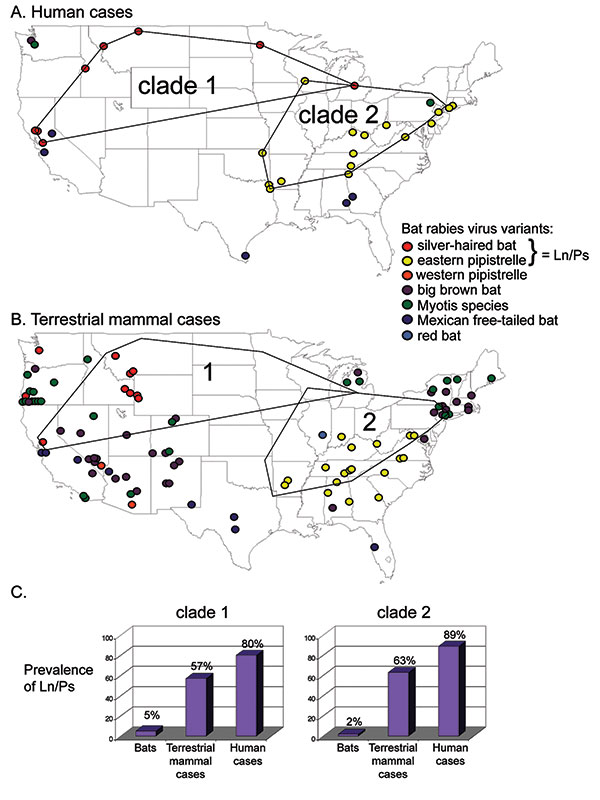Volume 9, Number 2—February 2003
Research
Emerging Pattern of Rabies Deaths and Increased Viral Infectivity
Figure 2

Figure 2. Geographic distribution of (A) human (including 5 formalin-fixed samples not shown in Figure 1) and (B) terrestrial mammal cases identified by rabies virus variant isolated. Minimum length polygons delimiting human cases associated with Silver-haired Bats (clade 1) and Eastern Pipistrelles (clade 2) shown in (A) and superimposed in (B). (C) Prevalence in regions delimited by clades 1 and 2. Lasionycteris noctivagans (Ln) and Pipistrellus subflavus (Ps) prevalence in bats was estimated from unpublished state public health department reports that determined the percentage of rabies-positive Silver-haired or Eastern Pipistrelle bats from the total number of bats submitted (7, unpub. data). L. noctivagans and P. subflavus prevalence in terrestrial mammals and humans is estimated as percentage of all spillover cases in each clade region infected with L. noctivagans or P. subflavus.